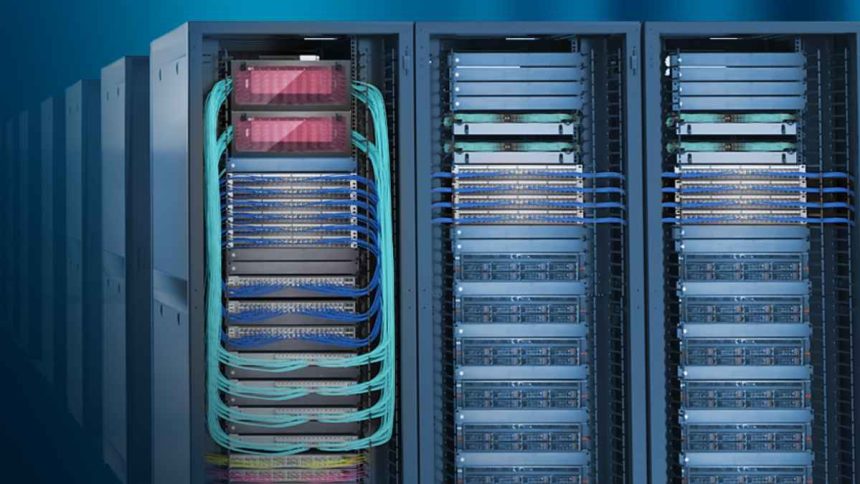Server furniture usually has 2 or 4 vertical uprights for fastening server equipment. In most cases, their designs do not imply placing non-server tools, accessories, or other staff. Server shelves are designed to accommodate all the supplementary tools and devices. Usually, server furniture is not equipped with shelves, and system administrators should buy them additionally. Thus, here, we’re going to consider how to pick a suitable network cabinet shelf for your cabinet or rack.
Types of Shelves
Modern manufacturers produce different models of server rack shelves, like here, for any purpose, enclosure, and type of device. Thus, the offer on the market is ready to please the demand of modern system administrators.
There are several classifications of shelves according to different parameters. If we treat products taking into account the number of fastening points, they are divided into shelves with one and two points of attachments. Judging by movability, shelves fall into sliding and fixed ones.
Compatibility of Shelves with Server Cabinets
The main aim of shelves is to support hardware and accessories. Thus, they must be durable and withstand high loads and dimensions. It is reasonable to buy 4-post shelves (with two points of attachment) for 4-post furniture and 2-post products for 3-post racks.
Yet, some system administrators try to mix shelves and adjust different models chasing cost efficiency. 2-post shelves can indeed fit 4-post racks. However, you should be extremely attentive when choosing compatible models.
The number of points of attachments is the core issue. The thing is that different models of shelves have 1 or 2 points of attachment. Thus, you should check how many attachments your rack has and then compare them with the selected shelves. If they have different numbers of attachments, this won’t work. Shelves will be mounted improperly and won’t be able to carry a big weight, which is potentially dangerous for hardware.
Thus, if you want to combine a 2-post network rack shelf designed for 4-post cabinets, check the number of attachments thoroughly.
Optimal Shelves for Different Kinds of Rack Mount Hardware
Different types of devices require particular storage conditions. Here are the most common types of products for various types of server accessories and apparatus.
- fixed rack products are chosen for desktop PCs and laptops to ensure perfect fitting and fastening;
- sliding half-shelves are usually preferable for connecting patch panels;
- adjustable switch models are selected for switches by system administrators.
The choice of appropriate models depends on the frequency of use, weight, purpose, and type of equipment.
Guide on How to Select the Needed Model of Shelves
Now, let’s make a step-by-step guide on how to find an optimal product for your server cabinet:
- Make a list of all the devices to be stored. You should clearly understand what type of hardware will be placed on shelves. This will help choose the right option, taking into account the size. It is recommended to create a layout to make sure that platforms will accommodate all the planned hardware and accessories.
- Think about how often you plan to access devices and tools. Ease of access determines the convenience of maintenance. If employees have to use tools and devices frequently, then it is advisable to use sliding platforms. For a more durable and rarely used apparatus, it is preferable to use fixed models.
- Calculate the depth and weight of the needed shelves. Make sure that models will be able to carry equipment and tools. Check the loading capacity of potential models.
Mounting Rails vs Rack Shelves
Sometimes, system administrators tend to use a server rack tray instead of shelves. Is it reasonable? In what cases? Let’s clarify the point.
Mounting rails are L-shaped hinges that do not have carrying surfaces. They imply that hardware is attached to it as it is. The main features of mounting rails are:
- rails fit any rack or cabinet, regardless of the depth since trays are adjustable;
- fewer materials are used for production, which reduces the cost;
- more compact solutions since no carrying platforms are needed.
Yet, note that this solution is suitable for equipment that has proprietary fasteners or mounting solutions because the use of rails implies attaching devices directly to them. If the hardware does not have fasteners or will be rarely used, it is better to use shelves.
Shelves stand as an important part of hardware allocation inside server cabinets. Their purpose is to support equipment and provide durable and reliable storage. Thus, it is important to select a suitable model that will be able to carry the expected number of devices. The modern market offers a wide variety of solutions for any kind of server furniture, purpose, and weight. There are both sliding and fixed products. Alternatively, the staff can use mounting rails. But this solution is suitable not in all cases.
Lynn Martelli is an editor at Readability. She received her MFA in Creative Writing from Antioch University and has worked as an editor for over 10 years. Lynn has edited a wide variety of books, including fiction, non-fiction, memoirs, and more. In her free time, Lynn enjoys reading, writing, and spending time with her family and friends.














![[Hand-Picked] 6 Best Proxy Browsers for Anonymous Experience](https://www.readability.com/wp-content/uploads/2025/04/Hand-Picked-6-Best-Proxy-Browsers-for-Anonymous-Experience-150x150.png)
